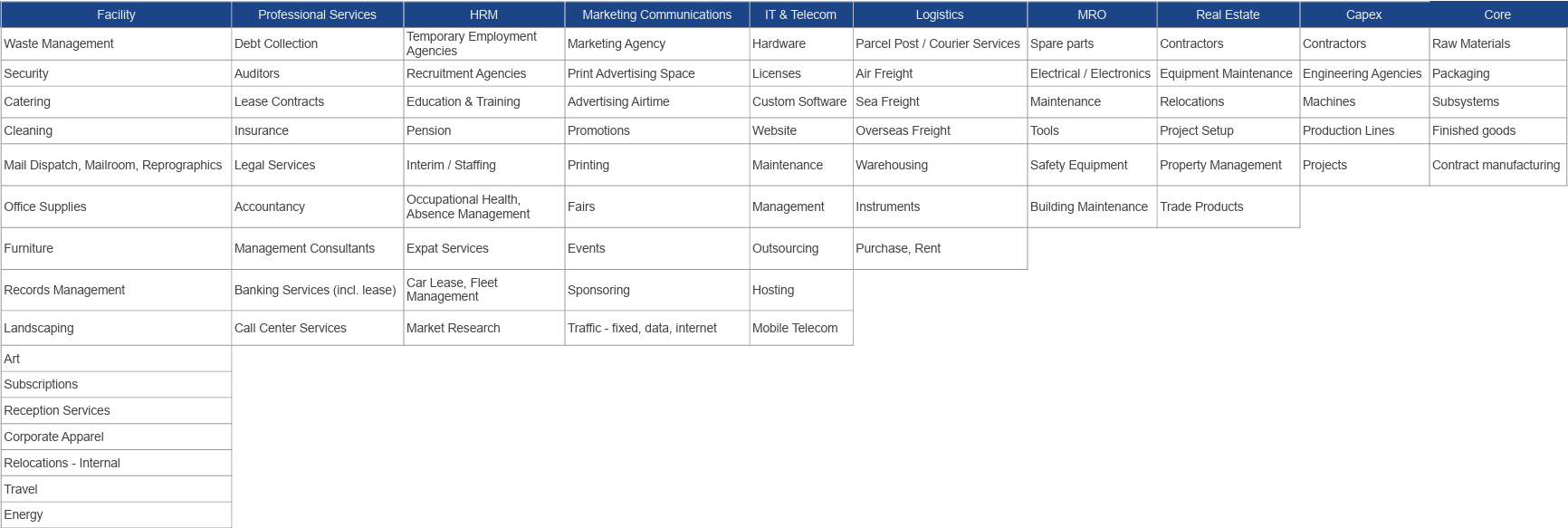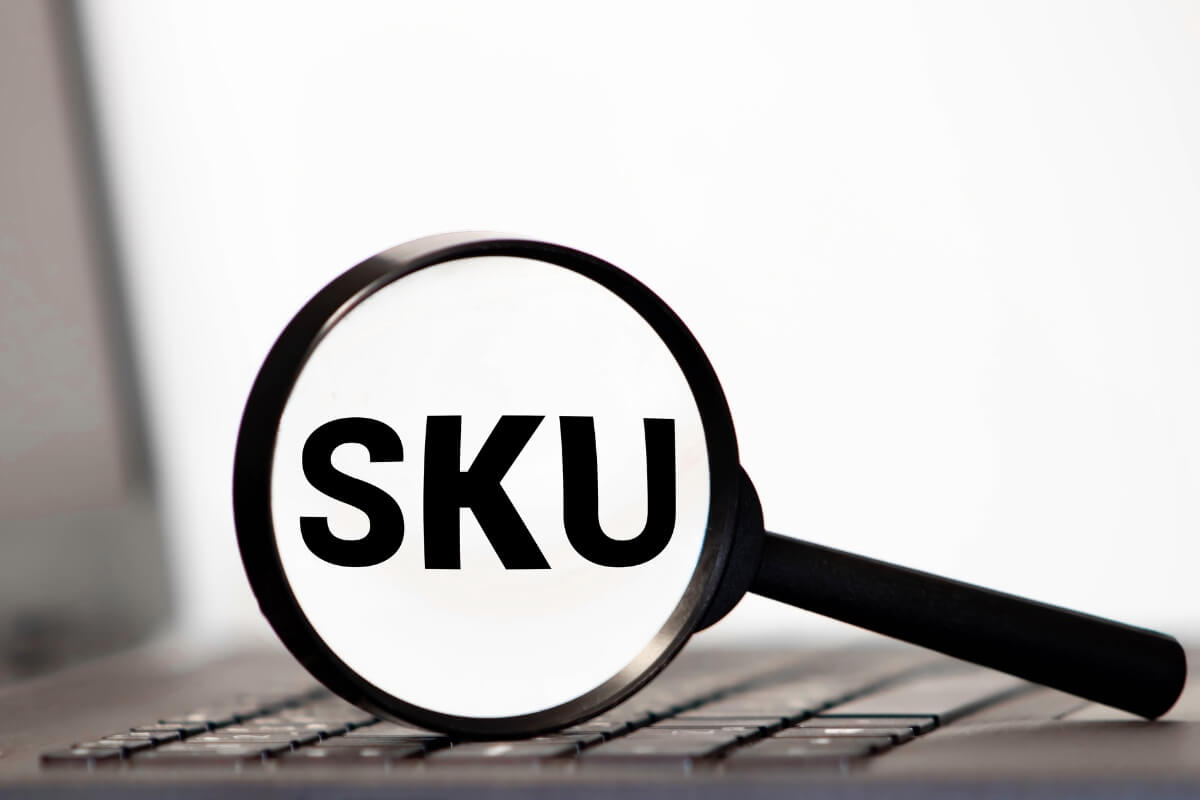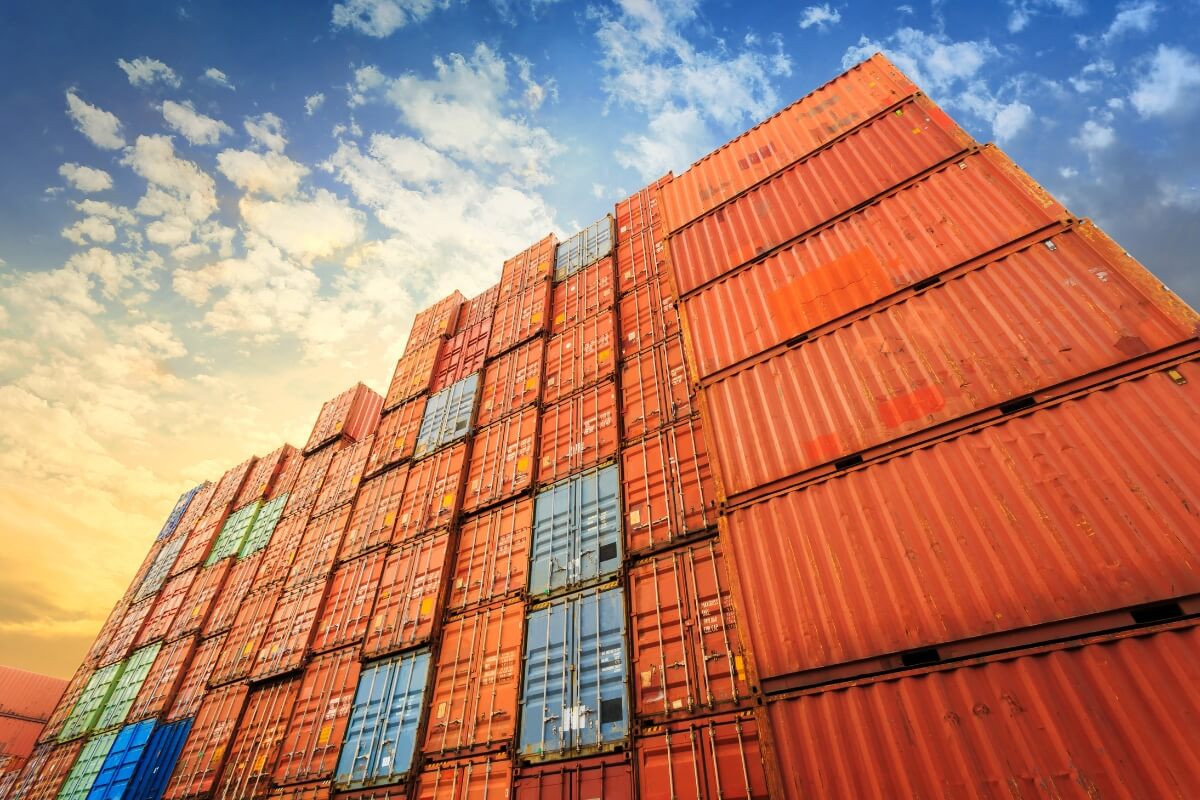Table of contents
What is the difference between direct and indirect procurement?
The total procurement of any organization can be divided into two main categories: direct and indirect procurement. What do these terms mean?
Direct procurement
What is direct procurement (also called “product related” or PR procurement)?
As the name “product related” suggests, this procurement is related to an organization’s primary process. For the manufacturing industry, this refers to the required materials, components and services that are the inputs to the production process with a final product as the output of that production process.
Think raw materials, components, subassemblies, sometimes trade items, as well as services such as machining semi-finished products or outsourcing production.

FREE WHITE PAPER
Reduce Total Cost of Ownership (TCO) with the Kraljic Matrix
Indirect Procurement
What is indirect (or NPR) procurement? Indirect purchasing in the manufacturing industry is the process of obtaining goods and services not directly related to the production of a product. This includes purchasing office supplies, IT equipment and other services such as legal and accounting services. It also includes selecting suppliers, negotiating prices and terms of delivery, and managing inventory.
Explanation Regarding the Inderect Purchasing Categories.
- Procurement of production assets (this category is called “Capex”),
- the maintenance of production equipment (this category is called MRO, which stands for Maintenance, Repair, Operations)
- Transport
- Packaging
opinions are divided on whether this falls under direct or indirect procurement.
And, for IT companies, procurement of IT is direct procurement, while for industry this is clearly an indirect procurement category.
More efficient procurement through category management and strategic planning
In today’s complex business environment, effective category management and strategic procurement planning are essential for optimizing the procurement process. Category management involves organizing resources to focus on specific areas of spending. With this strategic approach, procurement professionals can leverage market dynamics, negotiate better terms and improve supplier relationships.
Consider the following steps to develop a successful procurement plan:
- Analysis: Conduct a thorough spending analysis to understand where your money is going. Use ABC/Pareto analysis to prioritize categories based on their potential for cost savings and their impact on your business.
Strategic development: create a category strategy that aligns with your organizational goals. Define measurable objectives for each category to highlight opportunities for savings, efficiencies and risk management.
Stakeholder engagement: Work with stakeholders to ensure that the procurement plan meets their needs and addresses their concerns. A transparent communication plan is vital to staying aligned during the planning and implementation process.
Implementation: Develop detailed action plans for each category, specifying initiatives, responsible parties, timelines and performance measures. Adjust procurement policies to reflect category plan strategies and objectives.
Monitoring and Adjustment: Regularly monitor the performance of your category plan and make necessary adjustments to stay in line with organizational needs and market conditions. Work with suppliers and stakeholders to foster a culture of continuous improvement and innovation.
By incorporating these elements into your procurement strategy, you can make procurement a strategic function that contributes significantly to the success of your organization. The white paper “How to make a category plan” explores these concepts in greater depth and offers valuable insights into strategic purchasing practices.

FREE WHITE PAPER
How to Make a Category Plan
Notes on some of the categories
Raw materials
Commodities are materials used in the production of goods. They are raw materials extracted from nature or produced through industrial processes. Raw materials can be either natural resources, such as minerals and metals, or synthetic materials, such as plastics. Acquiring raw materials is an important part of the procurement process, as they form the basis for the production of various goods.
For example:
- Metal
- Plastic granules (e.g. PVC, PET, ABS)
- Wood
- Textile
- Glass
- Rubber
- Chemicals

Free whitepaper
Project Procurement in the Machine Building Sector
Packaging
Packaging refers to materials used to protect, store and transport products. It includes different types of packaging materials, such as cardboard boxes, plastic bags, glass bottles and metal cans. The purpose of packaging is to maintain the integrity of the product during transport and storage, and it also provides a way to identify and promote the product. Selecting the right packaging and obtaining it is an important aspect of the procurement process.
For example:
- Cardboard boxes
- “Big bags” (used in chemistry and construction)
- Glass
- Labels and stickers
Semi-products
Semi-products are materials or components that are used in the manufacturing process to eventually produce the final product. They are usually the result of an earlier production step and represent an intermediate stage in the production chain. Semi-products can be either composite parts, such as printed circuit boards in the electronics industry, or raw materials that are further processed, such as textile fibers in the garment industry. Obtaining the right semi-products is essential to ensure an efficient production process.
For example:
- Hydraulic systems
- Pneumatic systems
- E&I (electrical & instrumentation) equipment
- PCBs (printed circuit boards)
Find a buyer through xentys
At xentys, your experienced procurement recruitment agency, we are happy to help you find the right professional for your procurement team. Send a message today and strengthen your purchasing department.
Finished goods
Finished goods are finished products ready for sale and distribution to end users. These are products that have gone through the production process and are ready for use or consumption. Examples of finished goods include electronic devices, clothing, food and furniture. Acquiring finished goods is an important part of the procurement process, paying attention to quality, price, delivery time and other factors to ensure that the products meet end-user requirements and expectations.
As part of a finished product, products can be applied that are themselves finished products. Eg:
- Lap top
- Monitor
- Camera
Contract manufacturing
Purchasing contract manufacturing (also called “toll manufacturing”) is about outsourcing (outsourcing) production. Eg. Machining metal components, PCB (printed circuit board) production, or the complete production of a finished product by a third party.











